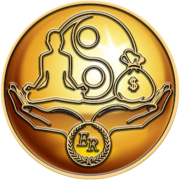Understanding the implications of tax laws is crucial for physicians, as recent changes in the United States have brought potential tax savings for doctors across various specialties. This blog explores the impact of these changes on physician income and provides insights into strategies for maximizing tax savings. From variations in tax rates to deductions for specific specialties and the potential benefits of pass-through income, we delve into the details to help physicians navigate the complexities of the new tax landscape.
Tax Savings Vary Across Medical Specialties:
Anesthesiologists
Estimated tax savings of 4.4% with an average salary of $269,600.
Anesthesiologists, with an average salary of $269,600, can expect a tax savings of approximately 4.4% due to the new tax laws. These savings result from changes in tax brackets and reduced tax rates, allowing anesthesiologists to retain a higher portion of their income.
Pediatricians
Estimated tax savings of 11.5% with an average salary of $184,240.
Pediatricians, with an average salary of $184,240, are expected to experience significant tax savings of approximately 11.5%. The new tax laws, which include reduced tax rates and revised tax brackets, contribute to these substantial savings, allowing pediatricians to benefit from a lower overall tax liability.
Family Doctors
Expected tax cut of 8.9% with an average income of $200,810. Family doctors, with an average income of $200,810, can anticipate a tax cut of around 8.9% due to the recent tax law changes. The reduced tax rates and modified tax brackets under the new legislation result in a lower tax burden for family doctors, enabling them to keep more of their earnings.
Personal Perspectives on Tax Changes
Physician on Fire
An anesthesiologist estimated $8,000 in savings due to reduced tax brackets, emphasizing the substantial impact on personal finances. The new tax legislation enabled the physician to attain financial independence at an early age.
Passive Income M.D
A higher-earning physician predicted potential tax increases for physicians earning over $600,000, highlighting the effects of deductions phased out at higher income levels. This demonstrates the varying impact of the tax changes on different income brackets.
The Benefit of Pass-Through Income Reduction

Understanding Pass-Through Income: Explaining how self-employed physicians can benefit from tax reductions on pass-through income. Pass-through income refers to earnings that are “passed through” the business to the individual as personal income, taxed at the individual tax rate rather than a corporate tax rate.
Deducting 20% of Revenue: Providing a detailed breakdown of the potential 20% deduction for owners of pass-through businesses, illustrating the financial advantage for self-employed physicians. This deduction allows a substantial portion of revenue to be excluded from taxable income, resulting in significant tax savings.
Impact on Career Decisions: Insights from experts suggesting that reduced taxes on pass-through income may drive more physicians towards self-employment. The tax savings offered by pass-through deductions can incentivize physicians to consider establishing their own practices or businesses.
Considerations and Complexity
Individual Eligibility
Exploring factors that affect eligibility for deductions, such as marital status, income thresholds, and additional income sources. The complexity of the tax laws requires physicians to carefully assess their individual circumstances and consult with tax professionals to determine eligibility for specific deductions.
Seeking Professional Guidance
Emphasizing the importance of consulting financial advisors and tax professionals to navigate the complexities of deductions, phaseouts, and different business structures. Professionals can provide personalized advice tailored to each physician’s unique financial situation, ensuring compliance and maximizing tax savings.
Conclusion
The recent tax law changes in the United States offer potential tax savings for physicians, with varying implications across specialties and income levels. By understanding the nuances of the new tax landscape and seeking professional advice, physicians can maximize their tax savings. While pass-through income reductions present opportunities for self-employed doctors, it is essential to consider individual circumstances and eligibility requirements. By staying informed and proactively managing their tax strategies, physicians can optimize their financial well-being and make the most of the evolving tax environment. Remember to consult with tax professionals to ensure accurate and up-to-date guidance tailored to your specific circumstances.
To further explore this topic and gain comprehensive guidance on maximizing tax savings as a physician, visit our website at ERPS Group. Our team of experts is dedicated to helping healthcare professionals navigate the intricacies of tax planning and achieve their financial goals. Take charge of your financial future and make the most of the latest tax law changes. Visit our website today for personalized assistance and resources tailored to physicians’ unique tax needs.





Leave a Reply
Want to join the discussion?Feel free to contribute!